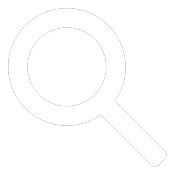Solar Resources
Did you know…
Solar Zones
What is a Solar Zone and why is it important to me?
What this means is at the end of the day the solar array that is included with your kit will effectively maintain the recommended battery pack specified by your light kit.
Essentially, because of the tilt of the earth with respect to the sun, sunlight is distributed unevenly across the surface of the Earth. This means that certain regions are more viable than others for Solar Power generation. Using data from The National Renewable Energy Laboratory (NREL) we made a simple map to assist you in getting the solar panel you need. Our map is roughly based on the average kWh of sunlight per square meter per day of a flat plate tilted south at latitude on December 21, the shortest day of the year. We made sure to consider panel efficiency as well as including a hefty margin of error to provide you with the best kit for your needs.

Choosing the Number of Hours Needed
DIY Billboard Lights based the lighting kits on usage and capacity. One of the main features you will need to decide upon is the amount of time you wish to have your light kit illuminated for. We currently offer 3 options: 4 total hours, 6 total hours, 8 total hours. The usage time can be split between hours after sunset and hours before sunrise. When you are deciding on which option to choose is the amount of traffic the street you are located on receives and is your target audience driving during that period of time. However, if you select a kit and you end up needing more usage, please call our sales reps and we will happily upgrade your kit to the right specs or let you know what you will need to increase total usage hours. Our phone number is: 1-813-920-7259 .

Batteries
One of the needs that we saw with current light kits on the market today was the lack of reserve power to keep your lights illuminated. Most kits that are available utilize a “high capacity” 7 amp hour battery. This size of battery will only give you about 1 day of usage and will require the proper sized panel for your location to recharge.
While solar will continue to work on cloudy or overcast days, their output will not be sufficient to recharge a fully discharged battery. With this in mind the technical staff at DIY Billboard Light set a standard of a 3 day minimum of reserve power will be needed with each light kit. That is why our kits require the use of 3 different battery sizes: Group Size 24, Group Size 31, or Group Size 8D. By utilizing these batteries we are able to deliver a truly “high capacity” sign lighting kit.
All of our kits are compatible with all the types of batteries on the market today. We designed our kit with flooded (wet cell) batteries in mind as they are inexpensive and readily available. However when you are shopping for a battery you will need a deep cycle marine battery. DO NOT buy a starting battery as they are designed to give peak amperage over a short period of time, ONLY deep cycle batteries are capable of sustained amperage loads. There are 3 main types of batteries available today that you can use for your light kit: Flooded (Wet Cell), Valve Regulated Lead Acid (Absorbed Glass Mat or Gelled Electrolyte), or Lithium-Ion. Each type has their pros and cons.
Flooded (Wet Cell)
Pros:
• Cheapest option available
• Easy to locate
Cons:
• Requires maintenance of electrolyte levels
• Can leak
• Depth of discharge is very low (roughly 50% of total capacity)
• Heavy
Valve Regulated Lead Acid (Both Gelled Electrolyte and Absorbed Glass Mat)
Pros:
• Sealed design
• Maintenance free
• Slightly higher depth of discharge than flooded batteries
• Slightly longer life spans
• More cycles than a wet cell battery
Cons:
• More costly than flooded batteries
• AGM batteries are not recommended for high heat applications
• Heavy
• Require special charge parameters (however our controllers have this built in already)
Lithium-Ion
Pros
• Highest depth of discharge (around 80% of total capacity)
• Lighter than conventional lead acid batteries
• “Dry” battery design
• Highest number of total cycles
Cons:
• Very expensive
• Only a few options on the market today
• Higher risk of fire (however newer battery chemistries have decreased this risk)
It is worth noting that the technology behind the various types of batteries is constantly improving. With respect to lithium-ion batteries the newer lithium iron phosphate (LiFePO4) is much more stable and less prone to fires. This battery chemistry is also provides better rates of discharge over other lithium batteries.
*Please Note* If are wishing to use a lithium-ion battery with your lighting kit please let our sales staff know so that they can help you find proper sized battery for your kit. Our battery calculations were originally done with lead acid batteries in mind, however we can spec out a lithium-ion battery for your kit.

Panel Specs
The solar panels included with your light kit feature an extruded aluminum frame and tempered glass face. The commercial grade construction will ensure that your panels will last you for years to come.
Other inferior panels are constructed from ABS plastic. While plastic is cheaper than aluminum and tempered glass, the plastic will slowly degrade over time and the plastic lens can start to haze over. This hazing will decrease the efficiency of the panel blocking out the much needed sunlight.

LED Flood Light Specs
When it comes to outdoor lighting using high quality material, really makes a difference. This is why our lights feature a cast aluminum housing with a high strength glass lens and surface mount (SMD) LEDs.
With traditional Dip LED (bulb style) the epoxy bulb creates spot beam, roughly 24°. Compare this to the SMD LED(Surface Mount Diode) which does not have a epoxy bulb, you will get a true flood beam angle of around 120°. Our LED lights will provide you with better light spread so that all of your sign is lit up. SMD LEDs are also more efficient than their Dip style counterparts. SMDs produce less heat and use less power to produce more usable lumens of light. SMD LED also have a greater lifespan than traditional Dip LEDs. On average a SMD LED will typically last around 100,000 hours.
Our LED flood lights have a high strength glass lens rather than a flimsy plastic lens that will haze over time.


